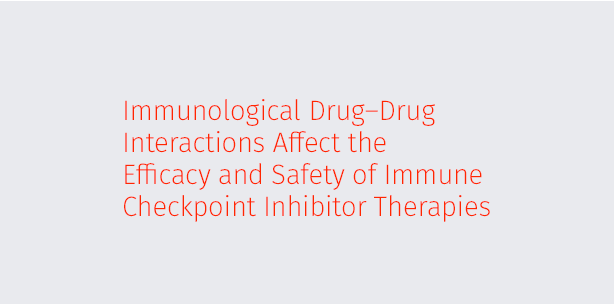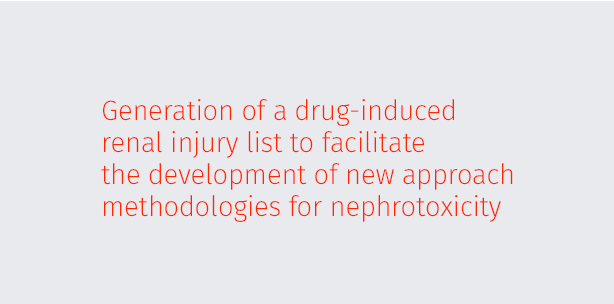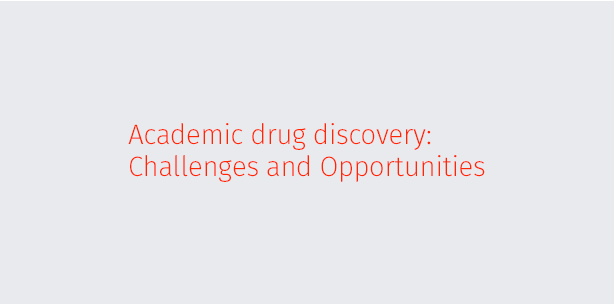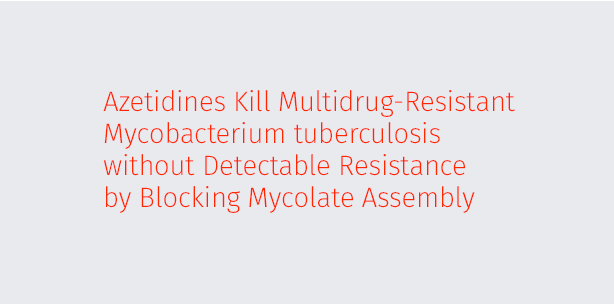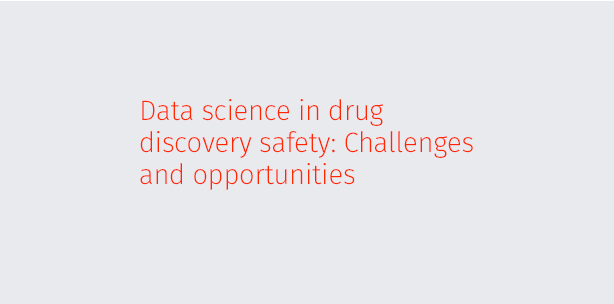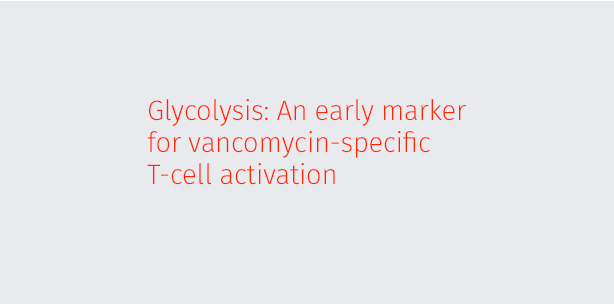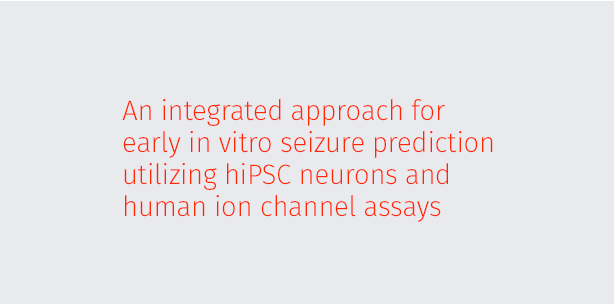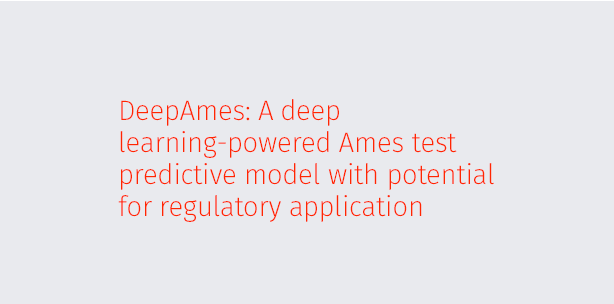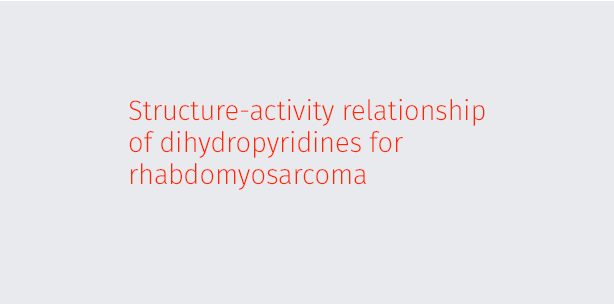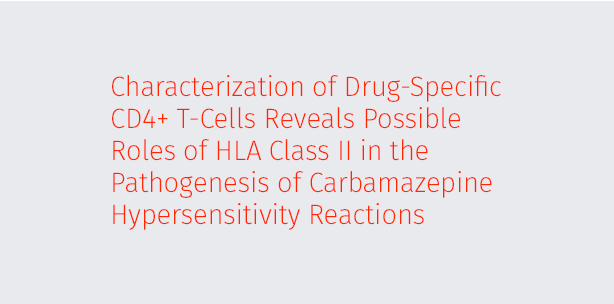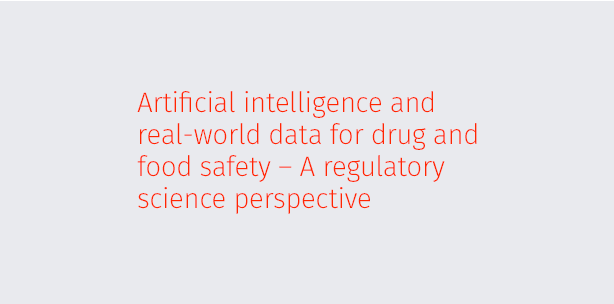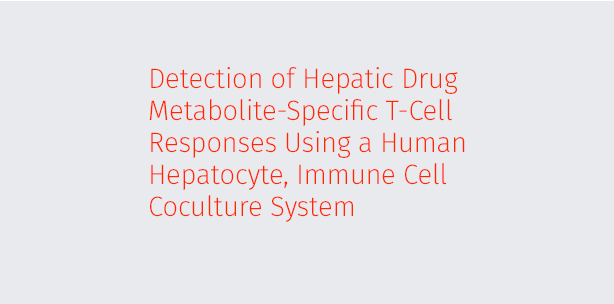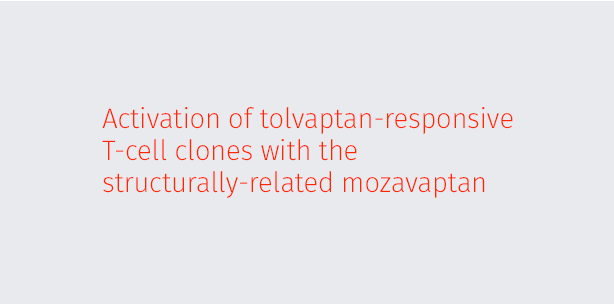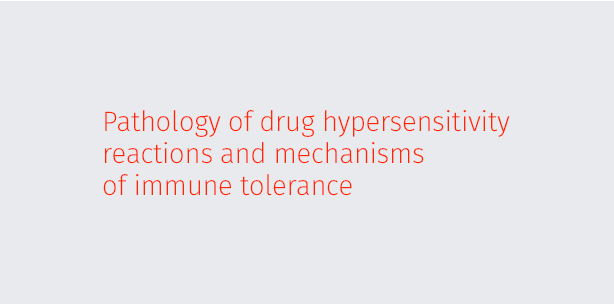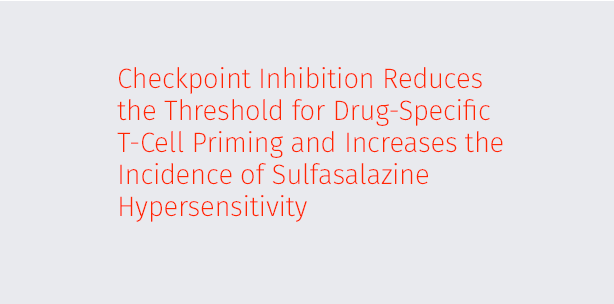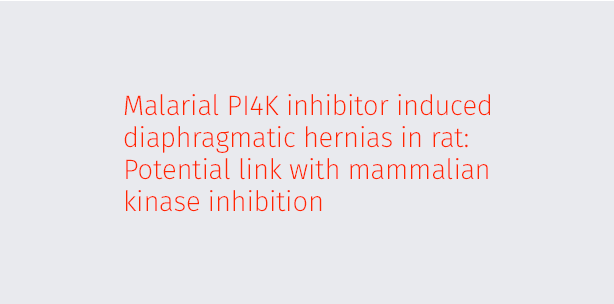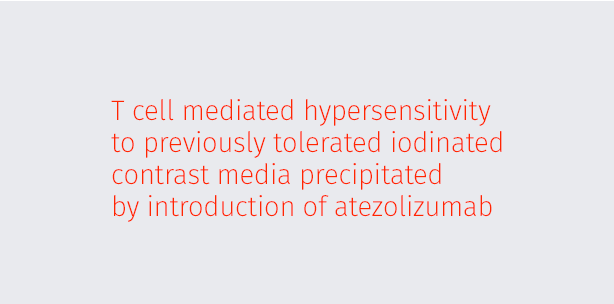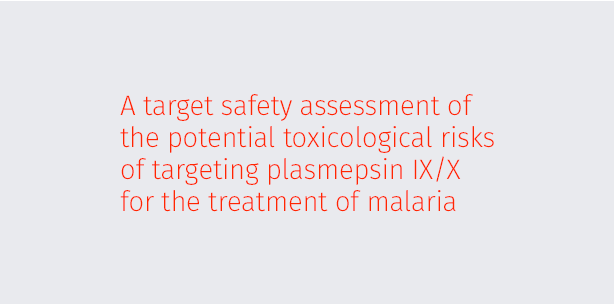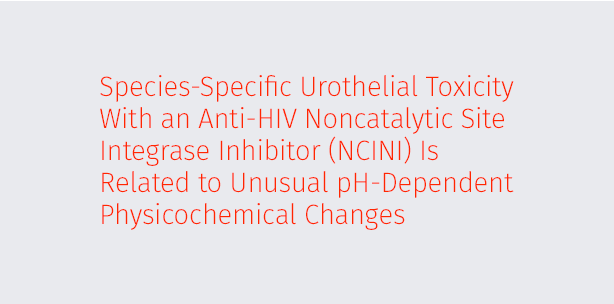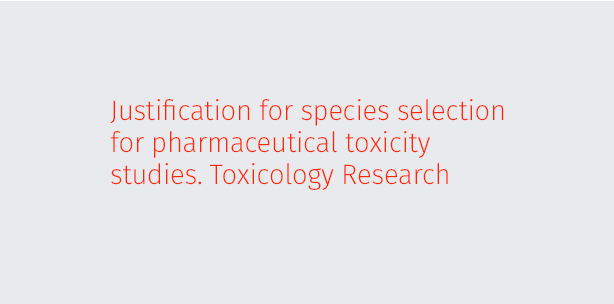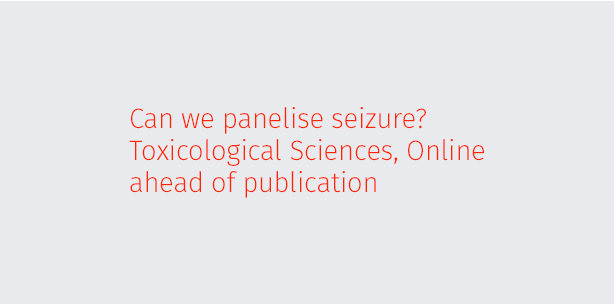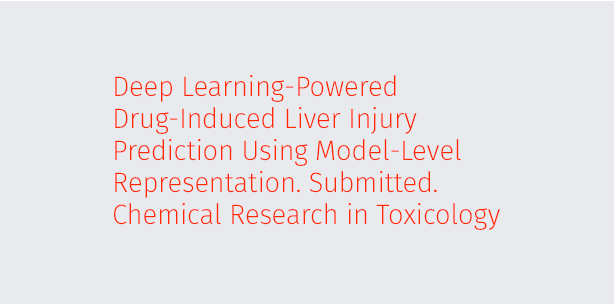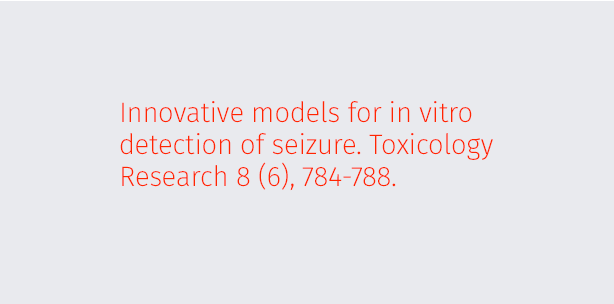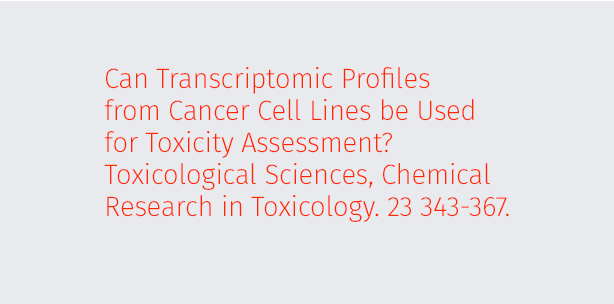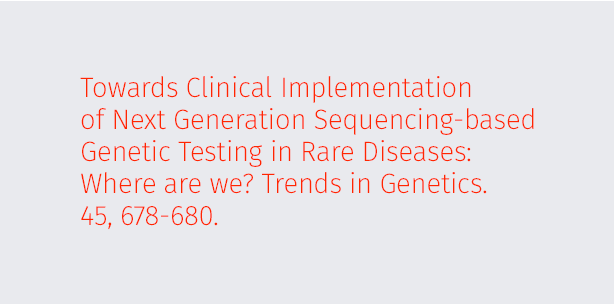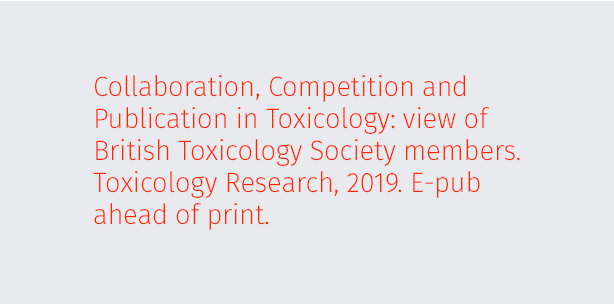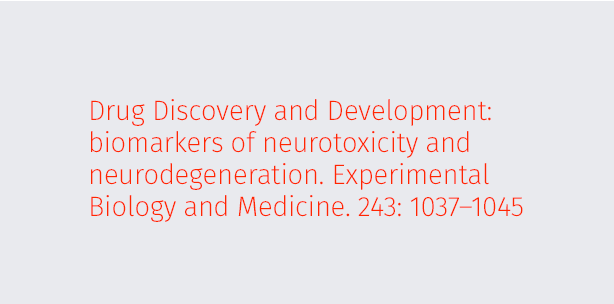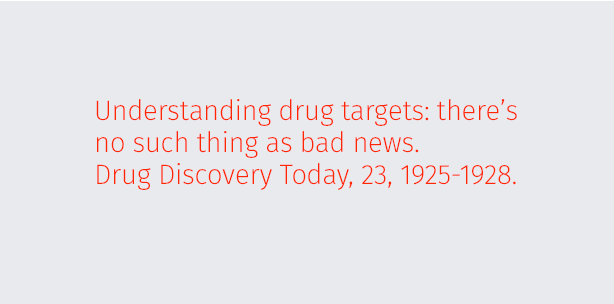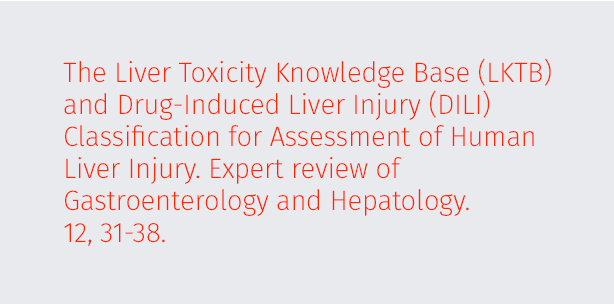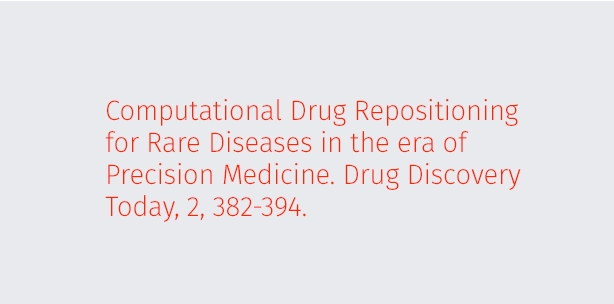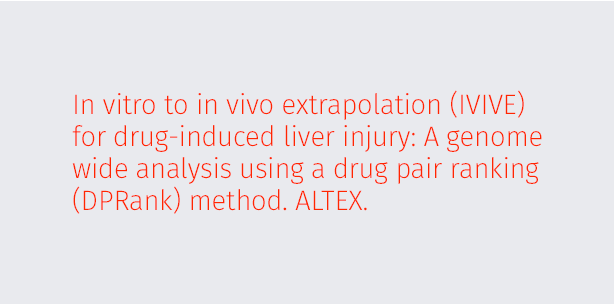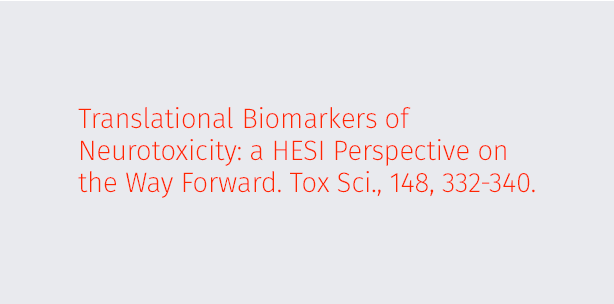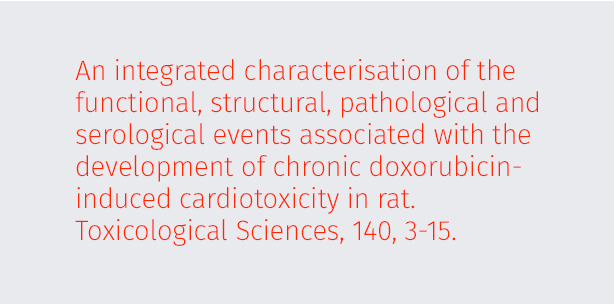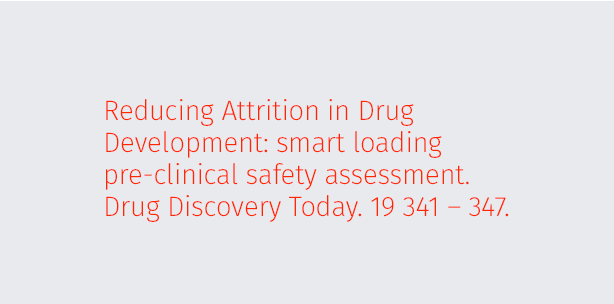- All
- AI
- Alternative Approaches
- British Toxicology Society
- CNS
- Data Science
- Deep Ames
- DILI
- Disease Specific
- Drug Discovery
- Immunotoxicology
- Ion Channels
- Target Safety Assessments
- Toxicology
Achieving human brain exposure with the oral ATM inhibitor AZD1390, a substrate of aldehyde oxidase
AZD1390 was identified as a highly potent, selective, small molecule inhibitor of ataxia telangiectasia mutated (ATM) kinase for use in combination with irradiation in the treatment of...
Read More
Immunological Drug–Drug Interactions Affect the Efficacy and Safety of Immune Checkpoint Inhibitor Therapies
With the rapid expansion in the development and clinical utility of immune checkpoint inhibitors (ICIs) for oncology, the continual evaluation of the safety profile of such agents...
Read More
Generation of a drug-induced renal injury list to facilitate the development of new approach methodologies for nephrotoxicity
Drug-induced renal injury (DIRI) causes >1.5 million adverse events annually in the USA alone. Although standard biomarkers exist for DIRI, they lack the sensitivity or specificity to...
Read More
Academic drug discovery: Challenges and Opportunities
There are many different approaches to drug discovery in academia, some of which are based broadly on the industrial model of discovering novel targets and then conducting...
Read More
Azetidines Kill Multidrug-Resistant Mycobacterium tuberculosis without Detectable Resistance by Blocking Mycolate Assembly
Tuberculosis (TB) is the leading cause of global morbidity and mortality resulting from infectious disease, with over 10.6 million new cases and 1.4 million deaths in 2021....
Read More
Data science in drug discovery safety: Challenges and opportunities
Early de-risking of drug targets and chemistry is essential to provide drug projects with the best chance of success. Target safety assessments (TSAs) use target biology, gene...
Read More
Glycolysis: An early marker for vancomycin-specific T-cell activation
Vancomycin, a glycopeptide antibiotic used for Gram-positive bacterial infections, has been linked with drug reaction with eosinophilia and systemic symptoms (DRESS) in HLA-A*32:01-expressing individuals. This is associated...
Read More
An integrated approach for early in vitro seizure prediction utilizing hiPSC neurons and human ion channel assays
Seizure liability remains a significant cause of attrition throughout drug development. Advances in stem cell biology coupled with an increased understanding of the role of ion channels...
Read More
DeepAmes: A deep learning-powered Ames test predictive model with potential for regulatory application
The Ames assay is required by the regulatory agencies worldwide to assess the mutagenic potential risk of consumer products. As well as this in vitro assay, in...
Read More
Structure-activity relationship of dihydropyridines for rhabdomyosarcoma
Childhood muscle-related cancer rhabdomyosarcoma is a rare disease with a 50-year unmet clinical need for the patients presented with advanced disease. The rarity of ∼350 cases per...
Read More
What’s been Hapten-ing over the last 88 years?
Definition of the relationship between drug protein adduct formation (haptenation) and development of immunological adverse drug reactions (drug hypersensitivity) has been an area of active research for...
Read More
Characterization of Drug-Specific CD4+ T‑Cells Reveals Possible Roles of HLA Class II in the Pathogenesis of Carbamazepine Hypersensitivity Reactions
Carbamazepine (CBZ) is an aromatic anticonvulsant known to cause drug hypersensitivity reactions, which range in severity from relatively mild maculopapular exanthema to potentially fatal Stevens-Johnson syndrome and...
Read More
Artificial intelligence and real-world data for drug and food safety – A regulatory science perspective
In 2013, the Global Coalition for Regulatory Science Research (GCRSR) was established with members from over ten countries (www.gcrsr.net). One of the main objectives of GCRSR is...
Read More
Detection of Hepatic Drug Metabolite-Specific T-Cell Responses Using a Human Hepatocyte, Immune Cell Coculture System
Drug-responsive T-cells are activated with the parent compound or metabolites, often via different pathways (pharmacological interaction and hapten). An obstacle to the investigation of drug hypersensitivity is...
Read More
Activation of tolvaptan-responsive T-cell clones with the structurally-related mozavaptan
Tolvaptan is an effective drug for the treatment of autosomal dominant polycystic kidney disease, but its use is associated with a significant risk of T-cell-mediated liver injury...
Read More
Pathology of drug hypersensitivity reactions and mechanisms of immune tolerance
Immune-mediated type IV adverse drug reactions are idiosyncratic in nature, generally not related to the primary or secondary pharmacology of the drug. Due to their complex nature...
Read More
Fifty years of the BTS—some reflections
As we celebrate 50 years of the BTS, it is timely to consider what topics and challenges dominated our thinking in toxicology 50 years ago and how...
Read More
Does immune checkpoint inhibitor therapy increase the frequency of adverse reactions to concomitant medications?
In recent years, the clinical installation of immune checkpoint inhibitors (ICIs) has proven to be an exceptionally valuable addition to oncological therapy, illustrating superior short- and long-term...
Read More
Tox-GAN: An Artificial Intelligence Approach Alternative to Animal Studies—A Case Study With Toxicogenomics
Animal studies are a critical component in biomedical research, pharmaceutical product development, and regulatory submissions. There is a worldwide effort in toxicology toward “reducing, refining, and replacing”...
Read More
Checkpoint Inhibition Reduces the Threshold for Drug-Specific T-Cell Priming and Increases the Incidence of Sulfasalazine Hypersensitivity
An emerging clinical issue associated with immune-oncology agents is the collateral effects on the tolerability of concomitant medications. One report of this phenomenon was the increased incidence...
Read More
Malarial PI4K inhibitor induced diaphragmatic hernias in rat: Potential link with mammalian kinase inhibition
MMV390048 is an aminopyridine plasmodial PI4K inhibitor, selected as a Plasmodium blood-stage schizonticide for a next generation of malaria treatments to overcome resistance to current therapies. MMV390048...
Read More
T cell mediated hypersensitivity to previously tolerated iodinated contrast media precipitated by introduction of atezolizumab
Many adverse reactions associated with immune checkpoint inhibitor (ICI) treatments are immunologically driven and may necessitate discontinuation of the ICI. Herein, we present a patient who had...
Read More
A target safety assessment of the potential toxicological risks of targeting plasmepsin IX/X for the treatment of malaria
The aspartic proteases plasmepsin IX/X are important antimalarial drug targets due to their specificity to the malaria parasite and their vital role as mediators of disease progression....
Read More
Species-Specific Urothelial Toxicity With an Anti-HIV Noncatalytic Site Integrase Inhibitor (NCINI) Is Related to Unusual pH-Dependent Physicochemical Changes
GS-9695 and GS-9822 are next-generation noncatalytic site integrase inhibitors (NCINIs) with significantly improved potency against human immunodeficiency virus compared with previous drugs such as BI-224436. These data...
Read More
AI-based Language Models Powering Drug Discovery and Development. Submitted.
The discovery and development of new medicines is expensive, time-consuming, and often inefficient, with many failures along the way. Powered by artificial intelligence (AI), language models (LMs)...
Read More
Justification for species selection for pharmaceutical toxicity studies. Toxicology Research
Toxicity studies using mammalian species are generally required to provide safety data to support clinical development and licencing registration for potential new pharmaceuticals… Author: Helen Prior, Richard...
Read More
Can we panelise seizure? Toxicological Sciences, Online ahead of publication
Seizure liability remains a significant cause of attrition in drug discovery and development, leading to loss of competitiveness, delays, and increased costs. Current detection methods rely on...
Read More
Deep Learning-Powered Drug-Induced Liver Injury Prediction Using Model-Level Representation. Submitted. Chemical Research in Toxicology
Drug-induced liver injury (DILI) is the most frequently reported single cause of safety-related withdrawal of marketed drugs. It is essential to identify drugs with DILI potential at...
Read More
Opportunities for use of one species for longer-term toxicology testing during drug development: A cross-industry evaluation. Reg Tox Pharm. 113, 104624.
An international expert working group representing 37 organisations (pharmaceutical/biotechnology companies, contract research organisations, academic institutions and regulatory bodies) collaborated in a data sharing exercise to evaluate the...
Read More
Deep Learning on High-Throughput Transcriptomics to Predict Drug-Induced Liver Injury. Frontiers in Bioengineering and Biotechnology, 8. Online ahead of publication.
Drug-induced liver injury (DILI) is one of the most cited reasons for the high drug attrition rate and drug withdrawal from the market. The accumulated large amount...
Read More
Drug Repositioning for Noonan and LEOPARD Syndromes by Integrating Transcriptomics With a Structure-Based Approach. Frontiers in Pharmacology, 11, 927.
Noonan and LEOPARD syndromes (NS and LS) belong to a group of related disorders called RASopathies characterized by abnormalities of multiple organs and systems including hypertrophic cardiomyopathy...
Read More
Innovative models for in vitro detection of seizure. Toxicology Research 8 (6), 784-788.
Data show that toxicity to the central nervous system (CNS) is the most frequent cause of safety failures during the clinical phase of drug development. CNS endpoints...
Read More
Can Transcriptomic Profiles from Cancer Cell Lines be Used for Toxicity Assessment? Toxicological Sciences, Chemical Research in Toxicology. 23 343-367.
In vitro toxicogenomics (TGx) has the potential to replace or supplement animal studies. However, TGx studies often suffer from a limited sample size and cell types. Meanwhile,...
Read More
Towards Clinical Implementation of Next Generation Sequencing-based Genetic Testing in Rare Diseases: Where are we? Trends in Genetics. 45, 678-680.
Next-generation sequencing (NGS) technologies have changed the landscape of genetic testing in rare diseases. However, the rapid evolution of NGS technologies has outpaced its clinical adoption. Here,...
Read More
Collaboration, Competition and Publication in Toxicology: view of British Toxicology Society members. Toxicology Research, 2019. E-pub ahead of print.
To ascertain attitudes to resourcing, collaboration and publication in toxicology, a survey was developed and distributed to British Toxicology Society (BTS) members. The survey comprised 14 questions...
Read More
Drug Discovery and Development: biomarkers of neurotoxicity and neurodegeneration. Experimental Biology and Medicine. 243: 1037–1045
The discovery and development of new drugs are vital if we are to improve and expand treatment options available to improve outcomes for patients. Overall, therapeutic strategies...
Read More
Understanding drug targets: there’s no such thing as bad news. Drug Discovery Today, 23, 1925-1928.
How can small-to-medium pharma and biotech companies enhance the chances of running a successful drug project and maximise the return on a limited number of assets? Having...
Read More
Changes in the metabolome and microRNA levels in biological fluids might represent biomarkers of neurotoxicity: A trimethyltin study. Experimental Biology and Medicine, 243, 228-236
Neurotoxicity has been linked with exposure to a number of common drugs and chemicals, yet efficient, accurate, and minimally invasive methods to detect it are lacking. Fluid-based...
Read More
The Liver Toxicity Knowledge Base (LKTB) and Drug-Induced Liver Injury (DILI) Classification for Assessment of Human Liver Injury. Expert review of Gastroenterology and Hepatology. 12, 31-38.
Introduction: Drug-induced liver injury (DILI) is challenging for drug development, clinical practice and regulation. The Liver Toxicity Knowledge Base (LTKB) provides essential data for DILI study. Areas...
Read More
Computational Drug Repositioning for Rare Diseases in the era of Precision Medicine. Drug Discovery Today, 2, 382-394.
There are tremendous unmet needs in drug development for rare diseases. Computational drug repositioning is a promising approach and has been successfully applied to the development of...
Read More
Lessons learned from two decades of anticancer drugs. TiPS 38, 852-872.
Tremendous efforts have been made to elucidate the basis of cancer biology with the aim of promoting anticancer drug development. Especially over the past 20 years, anticancer...
Read More
In vitro to in vivo extrapolation (IVIVE) for drug-induced liver injury: A genome wide analysis using a drug pair ranking (DPRank) method. ALTEX.
Preclinical animal toxicity studies may not accurately predict human toxicity. In light of this, in vitro systems have been developed that have the potential to supplement or...
Read More
Translational Biomarkers of Neurotoxicity: a HESI Perspective on the Way Forward. Tox Sci., 148, 332-340.
Neurotoxicity has been linked to a number of common drugs and chemicals, yet efficient and accurate methods to detect it are lacking. There is a need for...
Read More
An integrated characterisation of the functional, structural, pathological and serological events associated with the development of chronic doxorubicin-induced cardiotoxicity in rat. Toxicological Sciences, 140, 3-15.
Many efficacious cancer treatments cause significant cardiac morbidity, yet biomarkers or functional indices of early damage, which would allow monitoring and intervention, are lacking. In this study,...
Read More
Reducing Attrition in Drug Development: smart loading pre-clinical safety assessment. Drug Discovery Today. 19 341 – 347.
Entry into the crucial preclinical good laboratory practice (GLP) stage of toxicology testing triggers significant R&D investment yet >20% of AstraZeneca’s potential new medicines have been stopped...
Read More
- All
- AI
- Alternative Approaches
- British Toxicology Society
- CNS
- Data Science
- Deep Ames
- DILI
- Disease Specific
- Drug Discovery
- Immunotoxicology
- Ion Channels
- Target Safety Assessments
- Toxicology
Achieving human brain exposure with the oral ATM inhibitor AZD1390, a substrate of aldehyde oxidase
AZD1390 was identified as a highly potent, selective, small molecule inhibitor of ataxia telangiectasia mutated (ATM) kinase for use in combination with irradiation in the treatment of...
Read More
Immunological Drug–Drug Interactions Affect the Efficacy and Safety of Immune Checkpoint Inhibitor Therapies
With the rapid expansion in the development and clinical utility of immune checkpoint inhibitors (ICIs) for oncology, the continual evaluation of the safety profile of such agents...
Read More
Generation of a drug-induced renal injury list to facilitate the development of new approach methodologies for nephrotoxicity
Drug-induced renal injury (DIRI) causes >1.5 million adverse events annually in the USA alone. Although standard biomarkers exist for DIRI, they lack the sensitivity or specificity to...
Read More
Academic drug discovery: Challenges and Opportunities
There are many different approaches to drug discovery in academia, some of which are based broadly on the industrial model of discovering novel targets and then conducting...
Read More
Azetidines Kill Multidrug-Resistant Mycobacterium tuberculosis without Detectable Resistance by Blocking Mycolate Assembly
Tuberculosis (TB) is the leading cause of global morbidity and mortality resulting from infectious disease, with over 10.6 million new cases and 1.4 million deaths in 2021....
Read More
Data science in drug discovery safety: Challenges and opportunities
Early de-risking of drug targets and chemistry is essential to provide drug projects with the best chance of success. Target safety assessments (TSAs) use target biology, gene...
Read More
Glycolysis: An early marker for vancomycin-specific T-cell activation
Vancomycin, a glycopeptide antibiotic used for Gram-positive bacterial infections, has been linked with drug reaction with eosinophilia and systemic symptoms (DRESS) in HLA-A*32:01-expressing individuals. This is associated...
Read More
An integrated approach for early in vitro seizure prediction utilizing hiPSC neurons and human ion channel assays
Seizure liability remains a significant cause of attrition throughout drug development. Advances in stem cell biology coupled with an increased understanding of the role of ion channels...
Read More
DeepAmes: A deep learning-powered Ames test predictive model with potential for regulatory application
The Ames assay is required by the regulatory agencies worldwide to assess the mutagenic potential risk of consumer products. As well as this in vitro assay, in...
Read More
Structure-activity relationship of dihydropyridines for rhabdomyosarcoma
Childhood muscle-related cancer rhabdomyosarcoma is a rare disease with a 50-year unmet clinical need for the patients presented with advanced disease. The rarity of ∼350 cases per...
Read More
What’s been Hapten-ing over the last 88 years?
Definition of the relationship between drug protein adduct formation (haptenation) and development of immunological adverse drug reactions (drug hypersensitivity) has been an area of active research for...
Read More
Characterization of Drug-Specific CD4+ T‑Cells Reveals Possible Roles of HLA Class II in the Pathogenesis of Carbamazepine Hypersensitivity Reactions
Carbamazepine (CBZ) is an aromatic anticonvulsant known to cause drug hypersensitivity reactions, which range in severity from relatively mild maculopapular exanthema to potentially fatal Stevens-Johnson syndrome and...
Read More
Artificial intelligence and real-world data for drug and food safety – A regulatory science perspective
In 2013, the Global Coalition for Regulatory Science Research (GCRSR) was established with members from over ten countries (www.gcrsr.net). One of the main objectives of GCRSR is...
Read More
Detection of Hepatic Drug Metabolite-Specific T-Cell Responses Using a Human Hepatocyte, Immune Cell Coculture System
Drug-responsive T-cells are activated with the parent compound or metabolites, often via different pathways (pharmacological interaction and hapten). An obstacle to the investigation of drug hypersensitivity is...
Read More
Activation of tolvaptan-responsive T-cell clones with the structurally-related mozavaptan
Tolvaptan is an effective drug for the treatment of autosomal dominant polycystic kidney disease, but its use is associated with a significant risk of T-cell-mediated liver injury...
Read More
Pathology of drug hypersensitivity reactions and mechanisms of immune tolerance
Immune-mediated type IV adverse drug reactions are idiosyncratic in nature, generally not related to the primary or secondary pharmacology of the drug. Due to their complex nature...
Read More
Fifty years of the BTS—some reflections
As we celebrate 50 years of the BTS, it is timely to consider what topics and challenges dominated our thinking in toxicology 50 years ago and how...
Read More
Does immune checkpoint inhibitor therapy increase the frequency of adverse reactions to concomitant medications?
In recent years, the clinical installation of immune checkpoint inhibitors (ICIs) has proven to be an exceptionally valuable addition to oncological therapy, illustrating superior short- and long-term...
Read More
Tox-GAN: An Artificial Intelligence Approach Alternative to Animal Studies—A Case Study With Toxicogenomics
Animal studies are a critical component in biomedical research, pharmaceutical product development, and regulatory submissions. There is a worldwide effort in toxicology toward “reducing, refining, and replacing”...
Read More
Checkpoint Inhibition Reduces the Threshold for Drug-Specific T-Cell Priming and Increases the Incidence of Sulfasalazine Hypersensitivity
An emerging clinical issue associated with immune-oncology agents is the collateral effects on the tolerability of concomitant medications. One report of this phenomenon was the increased incidence...
Read More
Malarial PI4K inhibitor induced diaphragmatic hernias in rat: Potential link with mammalian kinase inhibition
MMV390048 is an aminopyridine plasmodial PI4K inhibitor, selected as a Plasmodium blood-stage schizonticide for a next generation of malaria treatments to overcome resistance to current therapies. MMV390048...
Read More
T cell mediated hypersensitivity to previously tolerated iodinated contrast media precipitated by introduction of atezolizumab
Many adverse reactions associated with immune checkpoint inhibitor (ICI) treatments are immunologically driven and may necessitate discontinuation of the ICI. Herein, we present a patient who had...
Read More
A target safety assessment of the potential toxicological risks of targeting plasmepsin IX/X for the treatment of malaria
The aspartic proteases plasmepsin IX/X are important antimalarial drug targets due to their specificity to the malaria parasite and their vital role as mediators of disease progression....
Read More
Species-Specific Urothelial Toxicity With an Anti-HIV Noncatalytic Site Integrase Inhibitor (NCINI) Is Related to Unusual pH-Dependent Physicochemical Changes
GS-9695 and GS-9822 are next-generation noncatalytic site integrase inhibitors (NCINIs) with significantly improved potency against human immunodeficiency virus compared with previous drugs such as BI-224436. These data...
Read More
AI-based Language Models Powering Drug Discovery and Development. Submitted.
The discovery and development of new medicines is expensive, time-consuming, and often inefficient, with many failures along the way. Powered by artificial intelligence (AI), language models (LMs)...
Read More
Justification for species selection for pharmaceutical toxicity studies. Toxicology Research
Toxicity studies using mammalian species are generally required to provide safety data to support clinical development and licencing registration for potential new pharmaceuticals… Author: Helen Prior, Richard...
Read More
Can we panelise seizure? Toxicological Sciences, Online ahead of publication
Seizure liability remains a significant cause of attrition in drug discovery and development, leading to loss of competitiveness, delays, and increased costs. Current detection methods rely on...
Read More
Deep Learning-Powered Drug-Induced Liver Injury Prediction Using Model-Level Representation. Submitted. Chemical Research in Toxicology
Drug-induced liver injury (DILI) is the most frequently reported single cause of safety-related withdrawal of marketed drugs. It is essential to identify drugs with DILI potential at...
Read More
Opportunities for use of one species for longer-term toxicology testing during drug development: A cross-industry evaluation. Reg Tox Pharm. 113, 104624.
An international expert working group representing 37 organisations (pharmaceutical/biotechnology companies, contract research organisations, academic institutions and regulatory bodies) collaborated in a data sharing exercise to evaluate the...
Read More
Deep Learning on High-Throughput Transcriptomics to Predict Drug-Induced Liver Injury. Frontiers in Bioengineering and Biotechnology, 8. Online ahead of publication.
Drug-induced liver injury (DILI) is one of the most cited reasons for the high drug attrition rate and drug withdrawal from the market. The accumulated large amount...
Read More
Drug Repositioning for Noonan and LEOPARD Syndromes by Integrating Transcriptomics With a Structure-Based Approach. Frontiers in Pharmacology, 11, 927.
Noonan and LEOPARD syndromes (NS and LS) belong to a group of related disorders called RASopathies characterized by abnormalities of multiple organs and systems including hypertrophic cardiomyopathy...
Read More
Innovative models for in vitro detection of seizure. Toxicology Research 8 (6), 784-788.
Data show that toxicity to the central nervous system (CNS) is the most frequent cause of safety failures during the clinical phase of drug development. CNS endpoints...
Read More
Can Transcriptomic Profiles from Cancer Cell Lines be Used for Toxicity Assessment? Toxicological Sciences, Chemical Research in Toxicology. 23 343-367.
In vitro toxicogenomics (TGx) has the potential to replace or supplement animal studies. However, TGx studies often suffer from a limited sample size and cell types. Meanwhile,...
Read More
Towards Clinical Implementation of Next Generation Sequencing-based Genetic Testing in Rare Diseases: Where are we? Trends in Genetics. 45, 678-680.
Next-generation sequencing (NGS) technologies have changed the landscape of genetic testing in rare diseases. However, the rapid evolution of NGS technologies has outpaced its clinical adoption. Here,...
Read More
Collaboration, Competition and Publication in Toxicology: view of British Toxicology Society members. Toxicology Research, 2019. E-pub ahead of print.
To ascertain attitudes to resourcing, collaboration and publication in toxicology, a survey was developed and distributed to British Toxicology Society (BTS) members. The survey comprised 14 questions...
Read More
Drug Discovery and Development: biomarkers of neurotoxicity and neurodegeneration. Experimental Biology and Medicine. 243: 1037–1045
The discovery and development of new drugs are vital if we are to improve and expand treatment options available to improve outcomes for patients. Overall, therapeutic strategies...
Read More
Understanding drug targets: there’s no such thing as bad news. Drug Discovery Today, 23, 1925-1928.
How can small-to-medium pharma and biotech companies enhance the chances of running a successful drug project and maximise the return on a limited number of assets? Having...
Read More
Changes in the metabolome and microRNA levels in biological fluids might represent biomarkers of neurotoxicity: A trimethyltin study. Experimental Biology and Medicine, 243, 228-236
Neurotoxicity has been linked with exposure to a number of common drugs and chemicals, yet efficient, accurate, and minimally invasive methods to detect it are lacking. Fluid-based...
Read More
The Liver Toxicity Knowledge Base (LKTB) and Drug-Induced Liver Injury (DILI) Classification for Assessment of Human Liver Injury. Expert review of Gastroenterology and Hepatology. 12, 31-38.
Introduction: Drug-induced liver injury (DILI) is challenging for drug development, clinical practice and regulation. The Liver Toxicity Knowledge Base (LTKB) provides essential data for DILI study. Areas...
Read More
Computational Drug Repositioning for Rare Diseases in the era of Precision Medicine. Drug Discovery Today, 2, 382-394.
There are tremendous unmet needs in drug development for rare diseases. Computational drug repositioning is a promising approach and has been successfully applied to the development of...
Read More
Lessons learned from two decades of anticancer drugs. TiPS 38, 852-872.
Tremendous efforts have been made to elucidate the basis of cancer biology with the aim of promoting anticancer drug development. Especially over the past 20 years, anticancer...
Read More
In vitro to in vivo extrapolation (IVIVE) for drug-induced liver injury: A genome wide analysis using a drug pair ranking (DPRank) method. ALTEX.
Preclinical animal toxicity studies may not accurately predict human toxicity. In light of this, in vitro systems have been developed that have the potential to supplement or...
Read More
Translational Biomarkers of Neurotoxicity: a HESI Perspective on the Way Forward. Tox Sci., 148, 332-340.
Neurotoxicity has been linked to a number of common drugs and chemicals, yet efficient and accurate methods to detect it are lacking. There is a need for...
Read More
An integrated characterisation of the functional, structural, pathological and serological events associated with the development of chronic doxorubicin-induced cardiotoxicity in rat. Toxicological Sciences, 140, 3-15.
Many efficacious cancer treatments cause significant cardiac morbidity, yet biomarkers or functional indices of early damage, which would allow monitoring and intervention, are lacking. In this study,...
Read More
Reducing Attrition in Drug Development: smart loading pre-clinical safety assessment. Drug Discovery Today. 19 341 – 347.
Entry into the crucial preclinical good laboratory practice (GLP) stage of toxicology testing triggers significant R&D investment yet >20% of AstraZeneca’s potential new medicines have been stopped...
Read More



